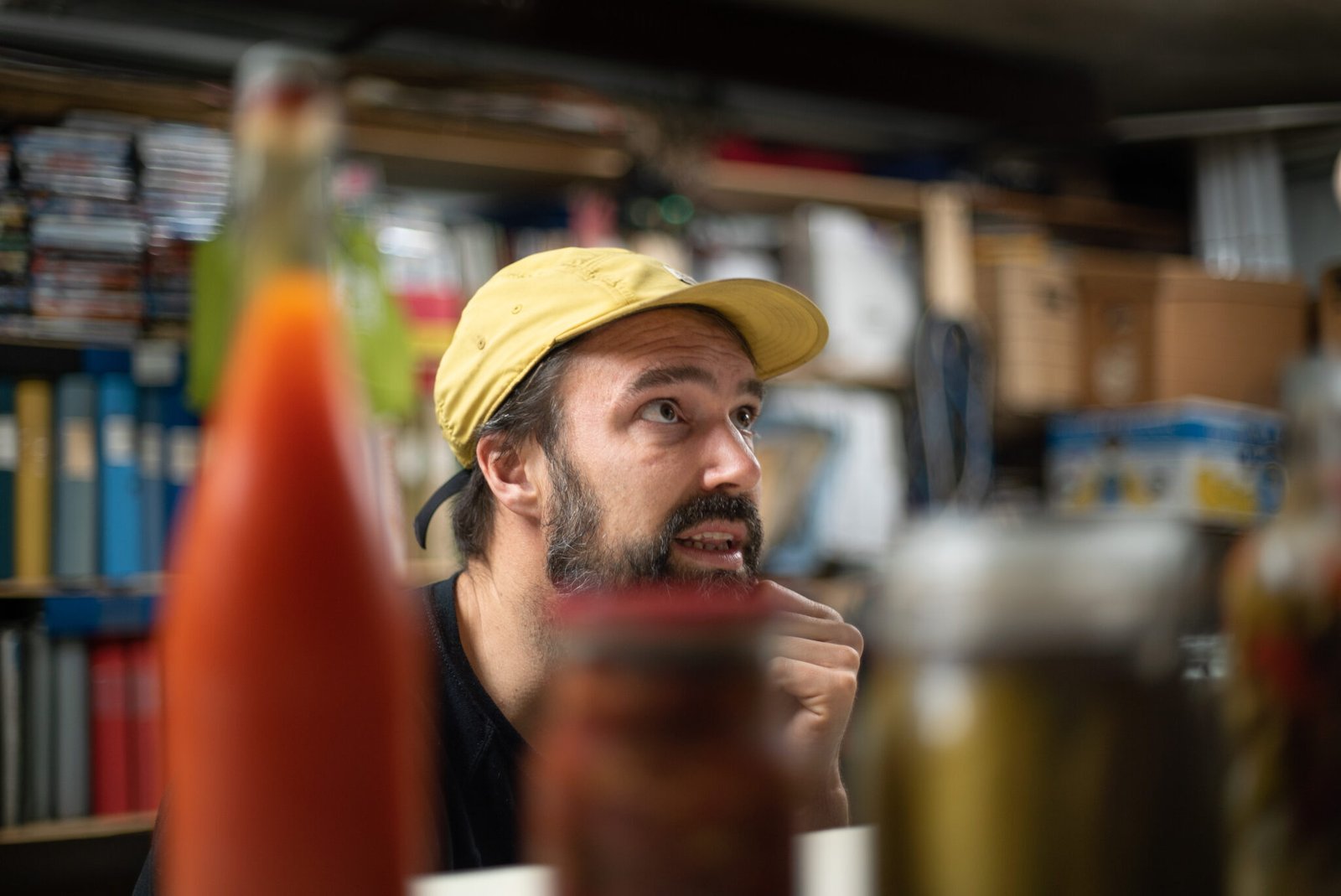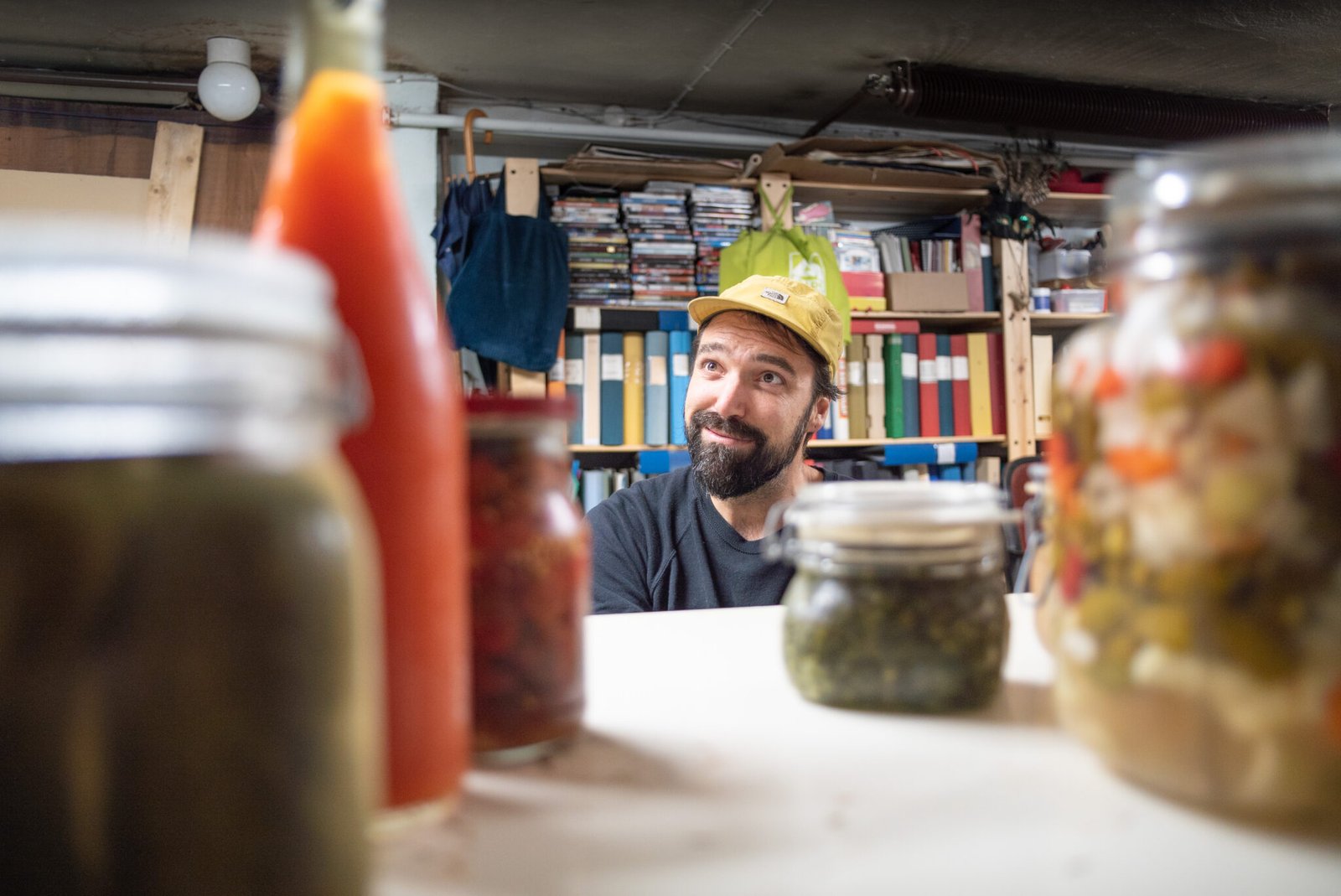
Conversation with Aron Adobati
Aron is in the midst of a move when we arrive one evening in early November. A large batch of kimchi has been moved to a friend’s root cellar in Gnesta, and all the lacto-fermented treasures from the refrigerator are temporarily stored at his father’s place in Södertälje. We drive there to investigate.
“ I had been growing a few tomato plants in a small greenhouse for a couple of years, but about five years ago, I started growing more. I got into fermentation pretty early on, even before I started gardening. I have always been very interested in food. I initially got into animals first – in some way, I find it even more enjoyable than working with vegetables. I also ferment meat, and I slaughter the animals myself at home. I like the whole package of “agriculture” with cuisine – how it all fits together: all the pieces – composting, cultivation, animal husbandry, processing, cooking, and EATING.”
“ I see it as a production, but about 99% of it is for my own use. I am structured, well-planned, and have documentation for everything. In my computer, I have everything related to seed planning, sowing, harvesting, and how I fermented it. I started documenting my fermentation process after taking your course. I manage to get two to three harvests per area, and I would never have been able to achieve that without knowing how long I should pre-cultivate one crop so that I can insert the next one at the right moment. I watch a lot of YouTube videos of other enthusiastic growers who find it cool to be really organized and well-planned. “Take it as it comes” – that’s not me. I am inspired by Curtis Stone and Richard Perkins, Charles Dowding, and the no-dig approach.”
Aron is fascinated by the culture surrounding food and the knowledge of ancient and sustainable methods that make sense from a consumption perspective. “It should be enjoyable and connected to nature and us humans in some way. ” When it comes to lacto-fermentation of vegetables, Aron describes how it has stemmed from what he feels like growing. In recent years, there has been a lot of cucumber, and a few years ago, he had an enormous chili harvest that forced him to figure out what to do with it. “I have enough tabasco for a lifetime. Seriously.”



“I have fermented tomatoes with 2% salt – lightly crush the tomatoes and add the salt. No brine. I use it for almost everything. It’s fantastic for adding acidity to dishes like pasta sauce. I find it adds a great flavour to cooking.
I notice that there are wooden discs at the top of all the jars, underneath the lid. “This was a great thing I came up. I am trained as a joiner and used to have a carpentry workshop. Otherwise, I wouldn’t have the wooden discs, as it would be a bit cumbersome to create them without a band saw.


“For me, the wooden discs serve two purposes – they prevent the vegetables from coming into contact with oxygen, and during the fermentation process, I believe the oak imparts flavor. One inspiration is that traditionally, people have done many picklings/fermentations in oak barrels. It’s nice to connect with history and tradition and create a unique flavor profile that might not be achievable otherwise but has likely existed in our history – as seen in many wines, of course.”
Aron shows us jars of lacto-fermented cucumber, tomato, chili, an experiment with just kale, and a jar that he likens to a vegetable soup – black kale, cabbage, celery, onion, garlic, fennel, and plenty of tarragon, which he found to be delicious. He envisions serving the large jar of lacto-fermented plums as a dessert with vanilla ice cream.
“I lacto-ferment directly in the jar, waiting until they start bubbling, then I put them in the fridge to mature, and afterwards, I take them out one by one. I never open and check. It feels – I’m not religious – but it’s like if you do that, you’ve destroyed ‘the Magic'” – Aron laughs – “the little spirit that’s inside, it’s been released then.”
Aron Adobati participated in a full day workshop Förädlingsodling: mjölksyrning för småskalig grönsaksodlare autumn 2021 at Hornuddens Trädgård i Strängnäs.


